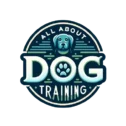Mastering Sophisticated Techniques for Effective Dog Training
Introduction to Advanced Dog Training
Dog training is an integral aspect of pet ownership, serving to strengthen the bond between owner and pet while fostering good behavior. In essence, it’s the art of communication, a two-way process that requires both the human and the dog to understand each other.
Once you’ve mastered the basics like sit, stay, and catch, it’s time to explore advanced dog training. It’s not just for show dogs and working dogs, but it’s beneficial for every dog breed. It focuses on enhancing obedience, behavior correction, agility, and special skills, going beyond the basics to build an even stronger bond.

Why Advanced Dog Training
Advanced dog training provides both physical and mental stimulation, which can alleviate many common behavior problems. Whether your dog exhibits signs of aggression, anxiety, or destructive behavior, advanced training techniques can provide solutions.
It’s more than teaching your dog new tricks; it’s about ingraining good habits and creating a happy, obedient, and well-socialized pet. Dogs habituated with advanced training are often easier to manage, relaxed in different settings and around unfamiliar faces, and more predictable in their behavior.
Let’s delve into different aspects of advanced dog training.
Obedience Training
At the advanced level, obedience training is about consistency in executing commands, even in distractions. The focus is on complex commands that can enhance a dog’s discipline. The ‘heel’ command, where your dog learns to walk right next to you without pulling on the leash, is one example.
It expands the spectrum of basic commands, teaching your canine how to respond to multi-step instructions, non-verbal cues, and even follow directions from a distance. Dogs proficient in advanced obedience are impressive and compelling in the way they engage and interact.

Behavioral Problem Correction
Problem behaviors such as excessive chewing, barking, aggression, or separation anxiety can make pet ownership challenging. Advanced training includes strategies and techniques to correct these behaviors effectively.
It’s a systematic approach, allowing dog owners to specifically target problem behaviors while promoting healthier alternatives. It’s important to remember that behavioral modification is a process and changes won’t occur overnight, but with patience and consistency, your pet’s overall demeanor and quality of life can significantly improve.
Agility Training
Agility training is a fun, engaging way to challenge and stimulate your dog. It’s not only a physical exercise but also a mental workout as it requires your dog to navigate through a course of obstacles following your signals.
Dog agility courses often include jumps, tunnels, weave poles, and seesaws, each demanding different skills from your dog. Preparing your dog for agility can improve their responsiveness and agility, providing a fun and healthy way to enhance your bond.

Specialty Training
Apart from obedience, agility, and behavior correction, advanced training also focuses on specialty training that includes services like search and rescue, therapy work, or sports such as flyball or dock diving.
These niche areas offer not just training but a lifestyle for dogs. It channelizes their instinctual capabilities, testing their skills and intelligence. Such dogs often work in coordination with people, making a significant contribution to society while enjoying the work itself.
Choosing An Advanced Dog Training Program
Choosing the right program requires understanding your dog’s needs, assessing their current skill level, and identifying your objectives. Here are a few factors to consider:
- Skills to be learned: Define your training objectives. Do you want to correct a specific behavioral issue, or are you hoping to teach your dog to perform a specific task or trick?
- Training Method: Consider whether the training method aligns with your philosophy and beliefs about how dogs should be treated.
- Trainer’s qualifications: Look for trainers with rich experience who have certifications from reputable organizations.
- Budget: Determine your budget for professional training services. Prices vary broadly, so it’s worthwhile to shop around.
- Time commitment: How much time can you and your dog dedicate to the training process?

FAQ
1. What age should I start advanced dog training?
While the timeline can vary depending on individual dogs, advanced training typically begins after your pet has a solid foundation of basic commands.
2. How long does it take to train a dog advanced commands?
Training time varies on factors like the dog’s age, breed, background, and the owner’s consistency. It can range from a few weeks to several months.
3. When is the best time to train my dog?
It’s best to train your dog when they are alert and eager to learn. This often is before feeding times as they would be motivated by treats then.
4. What if my dog doesn't respond to training?
Seek professional help if your self-training efforts are not yielding results. Trainers have the expertise to identify underlying issues that might be inhibiting the learning process.
Conclusion
The world of advanced dog training is expansive and rewarding, filled with opportunities to further enhance your relationship with your dog. It opens up new experiences and excitement, shaping your furry friend into well-behaved, intuitive, and intelligent companions who you can share more interactions with. In the process, you also enrich your own experience of companionship and affection.

